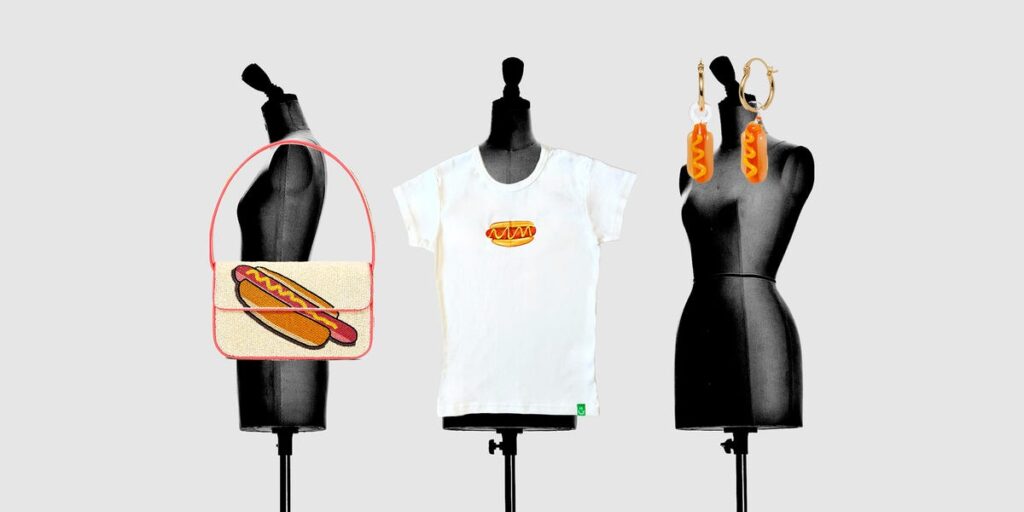When I was growing up, a hot dog was either an easy dinner or an occasion-specific treat for summer barbecues and sporting events. Now, on the cusp of my 30s, it has become an unlikely status symbol.
The rise of the hot dog has been in my periphery for several months; for my sister’s birthday last year, she received a hot dog-shaped pencil pouch and an Oscar Meyer hot dog toaster — a handy contraption with cylindrical slots for apartment-friendly weenie prep. (She’s always been a big hot dog fan, but who knew such gifts were even available for purchase?)
Around the same time, a viral trend on TikTok had people imitating the telltale call of a hot dog vendor. Fancy options began appearing on menus in major cities, from $19 wagyu hot dogs in San Francisco to $39 caviar-topped franks in Manhattan.
But in 2025, it seems glizzy mania has reached a boiling point. While hot dog sales at grocery stores surged during the pandemic, according to reporting from Vox, that appetite has now gripped a different kind of consumer. Now, it’s not just about eating hot dogs — it’s about wearing them.
A delicious style symbol
Trend-setters told me the hot dog is being embraced because it’s a symbol of whimsy and nonchalance.
“The aesthetic of the ‘cool girl’ is not caring,” fashion stylist Hailey Genevieve told Business Insider. “Everyone wants to have fun with their fashion, and so maybe that’s slapping a hot dog on your bag. It’s the ‘I don’t care’ vibe.”
These days, hot dog-themed shirts, hats, and other accessories are available everywhere from niche boutiques to massive retail chains: Indie retailer Lisa Says Gah sells hot dog earrings as part of the brand’s nostalgia-inspired “Boardwalk Collection,” while Urban Outfitters is offering an array of hot dog-shaped decor, from a ceramic vase and a scented candle (both $28) to a tufted bath mat ($49) and an eight-foot-long rug ($119).
Even “It” Girl fashion brands have gotten in on the fun. Staud, beloved by celebrities like Bella Hadid, Kendall Jenner, and Emily Ratajkowski, released a limited-edition Tommy Bag ($295) with a hand-beaded hot dog on the front and trails of ketchup and mustard on the handle. The “Dog Days” variant, released in mid-April and marketed as this year’s summer must-have, is already sold out online.
The hot dog has become such a popular motif in fashion and design that some TikTokers say it’s outpaced the demand from people who actually eat them.
“You can tell when people’s hot dog obsession is performative,” user @chappyshome said in an April video that has amassed over 3 million views and 228,000 likes. New York City-based user @liv.talmage agreed. “I actually despise hot dogs and would choose the burger every time,” she wrote in a video this week, showing off the coveted Staud bag. “Come for me if you want but she’s gorgeous.”
Of course, hot dogs have long been considered a staple in American culture, in part because they’re cheap to buy and easy to make. The difference now is they’re also stylish — a drastic reputational twist for a factory-produced tube of meat trimmings.
Fanny Chow, a prints and graphics strategist at the trend forecasting company WGSN, said it’s precisely the hot dog’s humble roots that make it an appealing and accessible icon, particularly to Gen Z consumers, whose spending habits tend to reflect an escapist sense of humor and a “passion for treat culture.”
Amid economic uncertainty, climate anxiety, and one unprecedented historical event after another, young people gravitate toward “glimmers,” Chow said, “a term we use for items or references that evoke ‘micro moments of joy'” in everyday life.
As a comfort food infused with memories of childhood, the hot dog makes for a particularly bright glimmer. As an adult, even if the taste no longer beckons, the nostalgia sure does.
“Whether it’s a trip to New York or a baseball game, everyone resonates in some way with that symbol,” Genevieve told BI. “Everyone has a story with a hot dog.”
Read the full article here
















